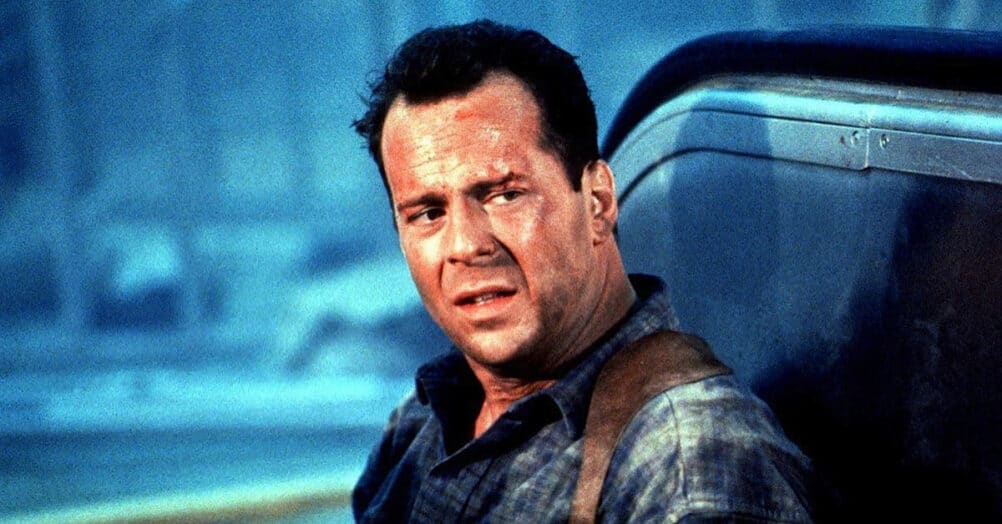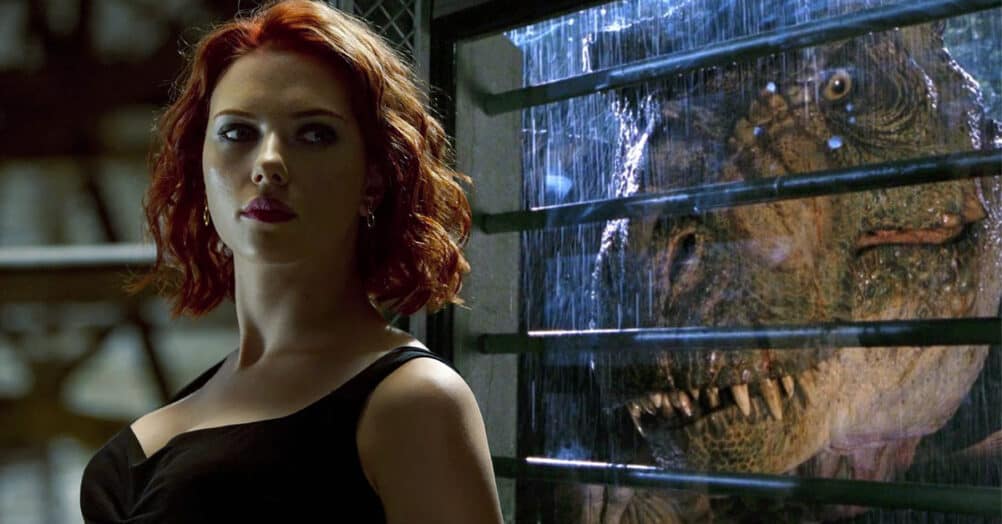
Ink & Pixel is a source of pride and joy for me as a writer and as such, I’m always striving to take this column further for those who read and enjoy it. If you yourself, or anyone you know, helped to make any of the amazing feature animated films found within this column, I would love to talk to you to further my knowledge. Please contact me at [email protected] so we can discuss it further.
Remake. Re-imagining. Reboot. These, more often than not, are the three most terrifying words one can hear when hearing that a film they hold dear is being reintroduced for the consumption of a new generation. Remakes are often plagued with poor casting choices, uninspired reproduction of scenes that never moved the story forward to begin with, and special effects that lack the purity of old school ingenuity and imagination. When directors Masayuki, Kazuya Tsurumaki, and Hideake Anno decided to retool the highly acclaimed television and film series NEON GENESIS: EVANGELION into four brand new feature-length films, it was anything but terrifying. It was a presentation of old ideas with a new sense of purpose- and it was awesome.

EVANGELION: 1.0: YOU ARE (NOT) ALONE is the incredibly visceral and compelling tale of 14-year-old Shinji Akari (Megumi Ogata/Spike Spencer), and how he came to pilot the Eva Unit-01, a synthetic humanoid weapon capable of mimicking a pilot’s thoughts and actions. After an event known throughout the film’s history as the “second impact”, an apocalyptic event that nearly leveled all of the world, Shinji is invited to a dystopian Tokyo-3 by his estranged father, Gendo Ikari (Fumihiko Tachiki/John Swasey). Shinji soon discovers that the true purpose of his being summoned to the NERV headquarters is to pilot a government sanctioned, larger-than-life robot, capable of immeasurable destruction.

The robots, known as Evangelions, are humanity’s last way of combating The Angels, a malevolent group of beings derived from the rejected life forms born at the beginning of man’s creation. Sound complicated? It is. All you really need to know is that The Angels will stop at nothing for their chance at conquering the civilization that they feel the humans have been squandering for far to long.

Under the guidance of Operations Director Misato Katsuragi (Kotomo Mitshushi/Allison Keith), Shinji, along with the pilots of Eva Unit-00: Rei Ayaname (Megumi Hayashibara/Brina Palencia) and Eva Unit-02: Asuka Langley Sohryu (Yuko Miyamura/Tiffany Grant), must confront their inner demons to emotionally master the functionality of the Evas and rescue all of mankind from their inevitable destruction.

EVANGELION: 1.0: YOU ARE (NOT) ALONE came about when Original Story, Screenplay, and Chief Director Hideaki Anno felt that fans of the original EVAGELION television series and films were beginning to stray from the Japanese animation (anime) medium. Anno felt that for years there had been no significant growth in the storytelling department of the industry. So rather than write a brand new epic for a new audience, Anno decided to present his masterpiece in a way that had never been seen before. It was risky. It might even sound a little narcissistic on the part of Anno, but let’s read on and find out how it worked, shall we?

When reinventing EVANGELION, the first thing Anno and his team saw fit to do was revitalize every last scrap of animation used in the previous installments of the series. Things such as backgrounds, cityscapes, and pivotal character scenes were all thrown away and re-created for the purpose of the new film being as fresh as possible. Stepping up to the plate in honor of tackling this challenge of a film project was Studio Khara, founded by Annon and established in May of 2006.. Up until this point in the history of EVANGELION, the Japanese animation studios Production I.G. (GHOST IN THE SHELL, BLOOD: THE LAST VAMPIRE) and GAINAX (MAGICAL SHOPPING ARCADE, FLCL) had been responsible for all of the previous installments in the series as well as the two films NEON GENESIS EVANGELION: DEATH & REBIRTH and NEON GENESIS EVANGELION: THE END OF EVANGELION.

If you’re an established fan of the EVANGELION television or film series, the very first aspect of these films that will grab your interest is the sleek CG animation that has been applied to the film. It’s important to remember that at this point the series had been established over 12 years ago, at a time when hand drawn cels and painted backgrounds were the standard. So to see the series finally making the leap into the digital age was really something. And to top it all off the story of EVANGELION would be told using digital 3D art and effects.

There is a clear distinction throughout animation that establishes what should be presented as “2D” and what must now be presented in “3D.” In EVANGELION: 1.0: YOU ARE (NOT) ALONE objects were more tangible than ever before. Buildings now loomed over the populous below, vending machine logos and lighting effects now begged for your attention, and the battles between the Evangelions and The Angels would have an even greater impact on the story thanks to the enhanced art techniques now being applied.

So not only was EVANGELION now being presented in a new “3D” art format, but it was now established that the ideas for the series long thought of as a pipe dream could become a reality. One film technique that proved itself to be a major success was the application of using “digital mobs” as the denizens of a recovering Tokyo-3. It used to be that these “background” or “mob” characters were just faceless nobodies seen busying themselves around the city. Only now, thanks to 3D and CG art programs each and every person inside the city now had a face as well as a purpose for their random behavior. These digital mobs worked out so well that they replaced all of the old “mobs” throughout the new film series, and the technique even went on to be used in other animations produced by Studio Khara.

Another thing to consider when working within “3D”, and most certainly for presenting a film series for now the third time in its history, is when to apply 3D to an object and when to let something stand as it was before the technological jump. Though the Evas are robotic in their presentation on screen their armored bodies are composed to look much more organic than one might expect. Remember that beneath that metallic exterior is a human being. And as such what looks like metallic sheeting on the Evas is actually a material able to change its shape to give the robots muscles, and in some rare cases, facial expressions.

It’s for this reason that specific areas of the robot were chosen to be presented using the new 3D technology to better emphasize the distinction between the two materials. For example, the hinges, entry plugs, and retractable parts of the Evas were all now presented in 3D while the rest of the Eva remained digitally hand drawn. The blending of these two art styles lent a fresh visual to the Eva robots while still maintaining the appearance and functionality of the original design. What’s new isn’t always better, but a balance of new and old seemed to be the perfect way to re-introduce these iconic giants to both returning fans of the series as well as those experiencing the majesty of the Evas for the first time.

By now we’ve established that EVANGELION: 1.0: YOU ARE (NOT) ALONE was visually a major step forward for the franchise but that wasn’t all that had changed in order to set this film series apart from the others that had come before it. Crucial scenes found in the original series of films were omitted and replaced by scenes that presented the material in a much more concise manner. Because this film was built to represent the first quarter arc of the entire series (Episodes 1-6) there was more than enough story to cover in its 98 minute run time.

I personally could never have enough EVANGELION in my life. It’s my favorite anime series right alongside BOOGIEPOP PHANTOM. I’ve poured many glasses of bourbon and have discussed many of this films concepts late into the wee hours of the morning with my friends. When the film was released both in Japan as well as America (in several formats including high-grossing DVD and Blu-Ray sales) the Eva film managed to pull in a grand total of $18.7 million or rather ¥2 Billion yen. What’s more is that the film is hailed by fans of the series as well as casual anime fans as being one of the best ever to be produced. It might have omitted key elements of a larger body of work, but the condensed pacing, art related upgrades, and digital spit shine were seen by many as being a great step for the franchise and we’ve still got three more films to go! Evas engage!




















Follow the JOBLO MOVIE NETWORK
Follow us on YOUTUBE
Follow ARROW IN THE HEAD
Follow AITH on YOUTUBE